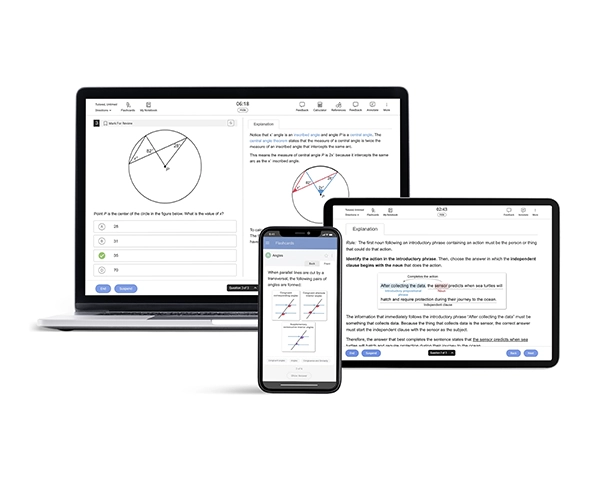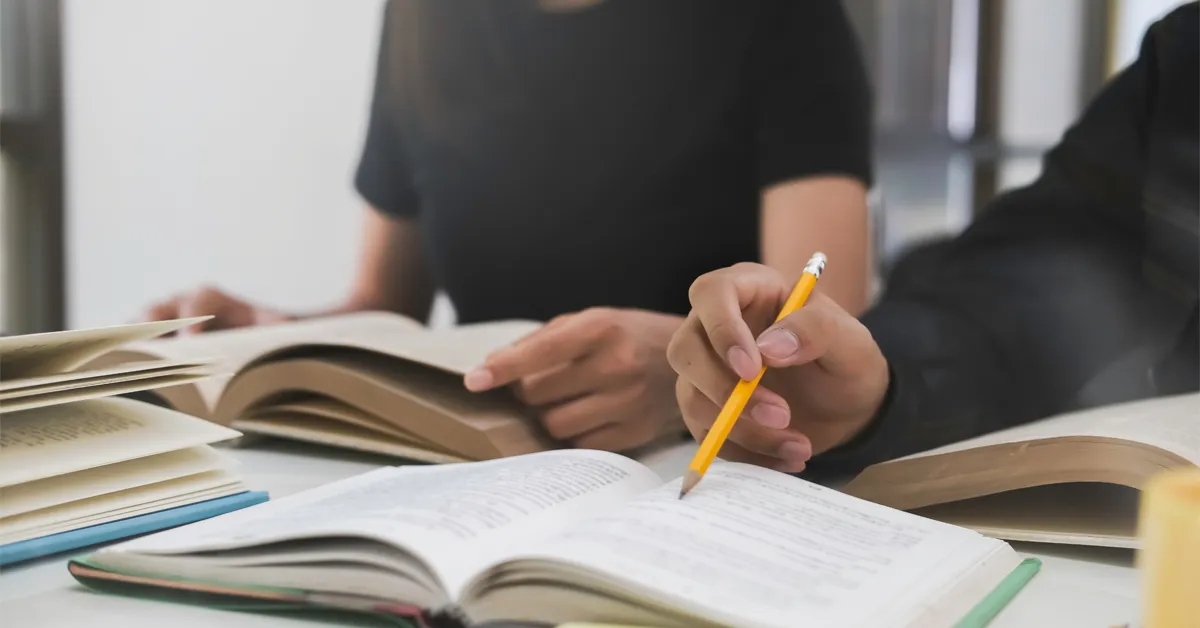Becoming a National Merit Scholar involves a multi-step process that begins with taking the PSAT/NMSQT® (Preliminary SAT/National Merit® Scholarship Qualifying Test) and extends through recognition, and potentially, the awarding of scholarships.
- Step 1: Meet the basic qualifications for the National Merit Scholarship program by ensuring you satisfy the eligibility requirements, which include taking the PSAT/NMSQT in your junior year of high school.
- Step 2: Aim to earn a winning PSAT score by achieving one of the top scores in your state, qualifying you for either commendation or as a semifinalist.
- Step 3: Semifinalists then craft an outstanding application, including the National Merit Scholarship application, an essay, and endorsements from your high school.
- Step 4: Finalists must earn a top college entrance exam score in the fall of their senior year, which validates their previous performance on the PSAT/NMSQT.
- Step 5: Selected Finalists have the opportunity to win scholarships.
High-scoring students who meet the selection criteria can be designated as commended students, semifinalists, or finalists.1 Each honor could translate into recognition that may help boost their chances of college admission, plus consideration for scholarships through either the National Merit® Scholarship Program (NMSP) or a College Board partner organization. Each year, these organizations distribute over $300 million in combined merit awards.2
In 2023, approximately 1.3 million high school students participated in the PSAT/NMSQT, yet only 15,000 will emerge as finalists for the National Merit Scholarship by February 2025, and only 7,880 scholarships will be awarded among them, highlighting the competition’s selectivity.3 This article is your comprehensive guide, demystifying the annual National Merit Scholarship competition.
Meet the Basic Qualifications3
In the pursuit of National Merit Scholarship aspirations, unlocking the achievement hinges on meticulous preparation, with your PSAT score to be a National Merit Scholar standing as the defining factor. To secure this financial aid opportunity, you must first excel in the PSAT/NMSQT . Remember, only the official PSAT/NMSQT counts toward the National Merit Scholarship Program (NMSP), not alternatives like the PSAT 8/9® or PSAT 10®.
Let’s break down the National Merit Scholar requirements:
- Take the test during your junior year (11th grade).
- Be a full-time high school student, whether in a traditional school setting or a homeschool, maintaining good academic standing toward a normal graduation schedule. Plan to kick off your college journey in the fall following your high school graduation.
- Students must be enrolled in a high school in the United States, the District of Columbia, or a U.S. commonwealth or territory. Alternatively, eligibility extends to U.S. citizens or permanent residents studying high school abroad.
Earn a Winning PSAT Score
In the 2022-23 school year, roughly 1.3 million students took the PSAT/NMSQT. Of these students, 50,000 high scorers will be asked to submit additional materials to be considered as a National Merit Scholar.3 Wondering how to become a National Merit Scholar? The answer lies in strategic preparation. Like with any test, preparation is key. The PSAT is now fully digital, so first download the Bluebook™ app to become familiar with it. Next, engage in a practice examination provided by the College Board® to identify your areas of strength and areas where you can further develop. Then, use digital SAT practice questions to gradually boost your performance.
Craft an Outstanding Application
You can expect your PSAT score report about 4–6 weeks after taking the test.5 The next step involves creating a standout application to qualify for a merit-based scholarship. With nearly a year between the PSAT and application submission, focusing on your academics can boost your chances. If you achieve National Merit Scholars Program semifinalist status, you can expect to receive the notification in September of your senior year. If you qualify as a semifinalist, submit your academic transcript and a recommendation letter from your high school principal.4
Earn a Top College Entrance Exam Score
Submitting an official SAT®, Digital SAT, or ACT score is required for your scholarship application. Achieving finalist status isn’t just about taking these exams; it’s crucial to excel with a high score to substantiate your PSAT/NMSQT performance. You must earn an equally high score on the SAT, Digital SAT, or ACT to ensure you will be considered a Finalist.4
What Is The Selection Process?
Suppose a student achieves a sufficiently high score on the PSAT to meet their state’s index score. In that case, they will receive notification in the fall of their senior year, typically around September. Those who score exceptionally well will either earn the title of Commended Student or progress to the semi-finalist stage, marking the beginning of their path toward becoming a National Merit Scholar.3
Letter of commendation
In the first phase of the selection process, about two-thirds of these students will be recognized as Commended Students. These students do not move forward to the semi-finalist round, but may be eligible for merit-based scholarships through their College Board partner organizations.4
Semifinalist selection
Only about 16,000 students – less than 1% of graduating seniors – make it to the semifinals.4 To keep things fair, the National Merit Scholarship Corporation (NMSC®) reviews state-by-state test scores, ensuring students nationwide have an equal shot. If you’re curious about the cutoff score, it changes yearly. Reach out to the NMSC for detailed score requirements in your state.3
Advance to finalist status
Approximately 95% of semifinalists move on to become finalists. To be eligible as a finalist, candidates must complete additional requirements, which includes completing an application, providing documentation, and scoring high on the SAT/ACT.3
Win scholarships6
The program picks 7,140 students as Merit Scholarship winners from the pool of finalists.3 Between March and the end of the school year, these National Merit Scholarship winners receive one of three types of scholarships. Some awards directly come from the NMSC, while businesses, foundations, professional organizations, and colleges grant others:
- National Merit Scholarship for $2,500: This is a one-time scholarship that is awarded in every state to 2,500 individuals. The committee does not consider financial status, college preference, intended course of study, or career plans during selection.
- Corporate-Sponsored Awards: These awards include over 1,500 merit scholarships and special scholarships for over $13 million. Some are renewable for all four college years, while others are one-time grants.
- College-Sponsored Merit Scholarship Awards: Nearly 4,000 awards are available through the 160 colleges that partner with NMSC. To be considered for these scholarships, finalists must designate one college as their first choice with NMSC. Representatives from that college will determine who receives these awards. These college-sponsored awards are renewable for up to four years, but cannot be transferred from one school to another.
Benefits of Becoming a National Merit Scholar
The National Merit Scholarship carries notable prestige among various merit awards. Receiving a Letter of Commendation or achieving semifinalist status highlights academic excellence and enriches your application, opening doors to educational opportunities and potential scholarships .
Scholarships
The scholarship program often focuses on award amounts, but the value for Merit Scholars extends beyond dollars. Colleges commonly offer scholarships and perks for Commended Students, semifinalists, finalists, and Merit Scholars. Consequently, schools take pride in enrolling a significant percentage of Merit Scholars.
Recognition
Earning the title of National Merit Scholar comes with prestigious recognition. This accolade is a testament to your academic prowess and a notable achievement that can enhance your college applications. Being recognized as a National Merit Scholar sets you apart and highlights your commitment to excellence. Reference: National Merit Scholarship Program.
Educational Opportunities
Beyond financial support, being a National Merit Scholar opens up diverse educational opportunities. Many colleges and universities value and actively seek out National Merit Scholars, offering unique programs, honors courses, and enriching educational experiences. This recognition can pave the way for a more fulfilling and intellectually stimulating college journey.8
The scholarship program often focuses on award amounts, but the value for Merit Scholars extends beyond dollars. Colleges commonly offer scholarships and perks for Commended Students, semifinalists, finalists, and Merit Scholars. Consequently, schools take pride in enrolling a significant percentage of Merit Scholars.
Earning the title of National Merit Scholar comes with prestigious recognition. This accolade is a testament to your academic prowess and a notable achievement that can enhance your college applications. Being recognized as a National Merit Scholar sets you apart and highlights your commitment to excellence. Reference: National Merit Scholarship Program.
Beyond financial support, being a National Merit Scholar opens up diverse educational opportunities. Many colleges and universities value and actively seek out National Merit Scholars, offering unique programs, honors courses, and enriching educational experiences. This recognition can pave the way for a more fulfilling and intellectually stimulating college journey.8
Frequently Asked Questions (FAQs)
We recommend that you aim for a PSAT/NMSQT score of 1450 or above to qualify for a National Merit scholarship, as this places you in the 99th percentile. Understanding the significance of your PSAT score to be a National Merit Scholar is crucial. A score of 1210 corresponds to the 90th percentile. The maximum achievable PSAT/NMSQT score is 1520.
Keep in mind that the NMSC determines the minimum PSAT score needed to become a semifinalist, and this score can vary each year. No fixed “minimum score” applies universally, as it depends on factors such as the selection index, the overall performance of test-takers in a given year, and how others in your state performed. To ascertain the specific score needed to qualify as a semifinalist and master the intricacies of how to become a National Merit Scholar, refer to the official guidelines and announcements provided by the NMSC for the relevant academic year. These resources offer vital insights, ensuring you stay informed and strategically position yourself for success on the journey to becoming a National Merit Scholar.1

References
1(2023). Entry Requirements. National Merit Scholarship Corporation. Retrieved November 16, 2023, from https://www.nationalmerit.org/s/1758/interior.aspx?sid=1758&gid=2&pgid=1876
2(2023). Get Familiar with the Digital PSAT/NMSQT. College Board. Retrieved November 16, 2023, from https://satsuite.collegeboard.org/sat-suite-benefits-students-parents/why-take-psat/why-take-psat-nmsqt
3(2023). Steps in the 2025 National Merit® Scholarship Competition. National Merit Scholarship Corporation. Retrieved November 16, 2023, from https://www.nationalmerit.org/s/1758/interior.aspx?sid=1758&gid=2&pgid=1745
4(2023). Program Recognition. National Merit Scholarship Corporation. Retrieved November 16, 2023, from https://www.nationalmerit.org/s/1758/interior.aspx?sid=1758&gid=2&pgid=1881
5(2023). PSAT/NMSQT Scores. College Board. Retrieved November 16, 2023, from https://satsuite.collegeboard.org/psat-nmsqt/scores#:~:text=PSAT%2FNMSQT%20scores%20are%20typically,weeks%20after%20the%20test%20administration.
6(2023). Types of Scholarships. National Merit Scholarship Corporation. Retrieved November 16, 2023, from https://www.nationalmerit.org/s/1758/interior.aspx?sid=1758&gid=2&pgid=1882
7(2023). Requirements and Instructions for Semifinalists in the 2024 National Merit® Scholarship Program. National Merit Scholarship Corporation. Retrieved November 16, 2023, from chrome-extension://efaidnbmnnnibpcajpcglclefindmkaj/https://nationalmerit.imodules.com/s/1758/images/gid2/editor_documents/merit_r_i_leaflet.pdf?sessionid=c8f27eae-0577-4765-ab10-4671c082943a&cc=1
8(2023). PSAT/NMSQT Student Guide. College Board/National Merit Scholarship Corporation. Retrieved November 17, 2023, from https://www.nationalmerit.org/s/1758/images/gid2/editor_documents/student_guide_23.pdf#page=32
(2023, September 26). SAT Program Results for the Class of 2023 Show Continued Growth in SAT Participation. College Board. Retrieved November 16, 2023, from https://newsroom.collegeboard.org/sat-program-results-class-2023-show-continued-growth-sat-participation#:~:text=Approximately%203.7%20million%20students%20participated,the%202021%2D22%20school%20year.
(2023). PSAT 8/9 Overview and Important Dates. College Board. Retrieved November 16, 2023, from https://counselors.collegeboard.org/assessments/psat-8-9/overview-dates#:~:text=The%20PSAT%208%2F9%20is,in%20the%20fall%20or%20spring.




